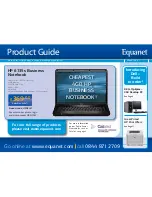
Chapter 6. IBM System Management Tools
Wake on LAN capability built in
In IBM IntelliStations that have a Wake on LAN-enabled LAN adapter card integrated or installed, the
LAN adapter interfaces are as follows.
– Network interface to decode the wake-up frame. This is how the LAN adapter determines whether
the wake-up frame is addressed to the client.
– Auxiliary power interface for auxiliary adapter power source. A wire runs from the client's power
supply to the adapter card. This wire supplies 5 volts of power, which the adapter card needs to
turn on the client. Power is available while the client is plugged into an electrical outlet that is
receiving power.
– Wake-up signal interface. The adapter uses this interface to notify the client that it has received a
wake-up frame.
– System bus interface. This interface is for reading and writing control information that is specific to
the wake-up function.
Software to trigger the wake-up frame
Remote network management software is required to send a special wake-up frame to the Wake on
LAN-enabled LAN adapter.
How Wake on LAN works
The following sequence of events occurs when Wake on LAN turns on your computer:
1. Remote network management software, such as LANClient Control Manager or IBM Netfinity
Manager, sends a wake-up frame to the computer. The wake-up frame is based on industry-standard
Magic Packet specifications. See "Definition of the Wake-up Frame" for a description of the wake-up
frame's contents.
2. The Wake on LAN-enabled adapter in the computer receives the wake-up frame and analyzes it to
determine whether the frame contains the client's media access control (MAC) address.
3. If the frame contains the computer's MAC address and if CMOS is enabled, the computer turns on,
just as if you turned it on using the On/Off switch.
4. The remote network management software performs the tasks that it has been programmed to
perform.
Definition of the Wake-up Frame
The wake-up frame contains a unique data field not normally expected in typical traffic on a LAN. When a
Wake on LAN-enabled adapter on a turned-off computer decodes this data field, a wake-up signal is
generated. This wake-up signal causes the computer to power on.
The key to the wake-up frame is the MAC address of the target computer, which is repeated 16 times.
This pattern of 16 addresses in the data field is not expected to occur in any normal LAN frame other than
the specific wake-up frame.
The destination address can be either a specific address or a broadcast address. If the destination
address is a specific address, the wake-up frame is sent only to the computer at that address. However,
since the computer is powered off and no longer transmitting, some protocols remove this computer's
MAC address from routing tables and internal caches at other nodes. In this case, wake-up frames
addressed directly to the target computer are discarded because nodes and routers do not know where to
send them.
The solution to this problem is to use a broadcast address. A directed broadcast has a valid network
address and a broadcast host address. Network routers and nodes forward directed broadcasts to the
Chapter 6. IBM System Management Tools
41
















































